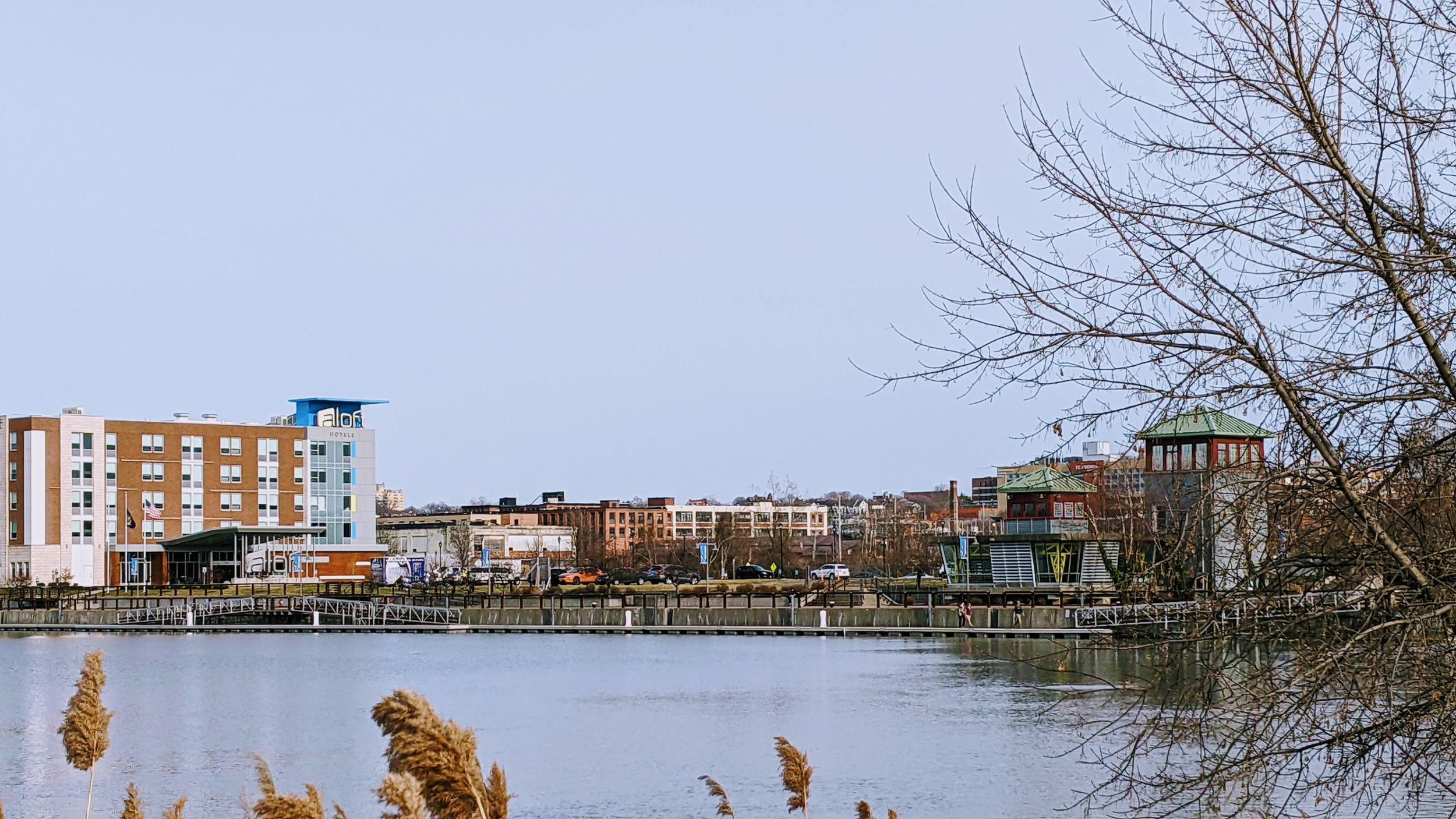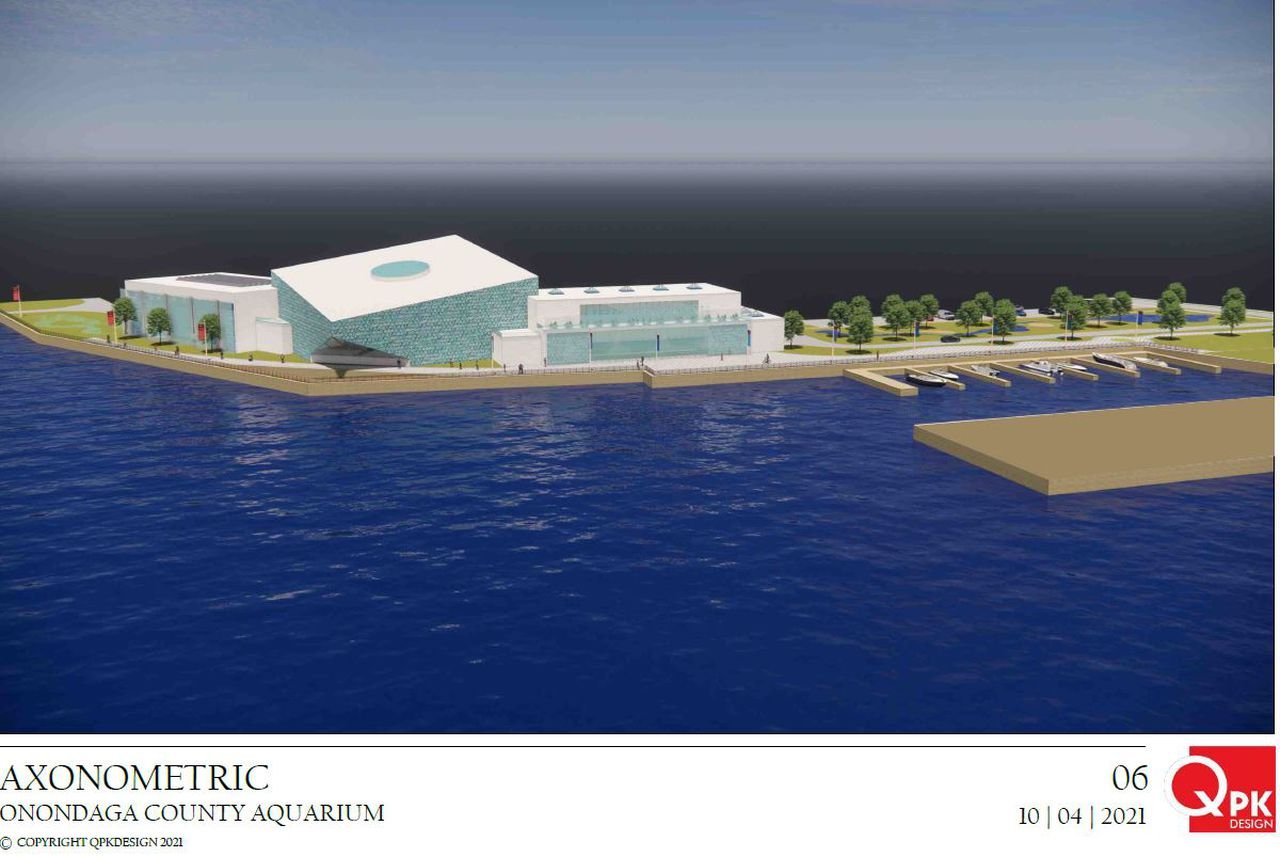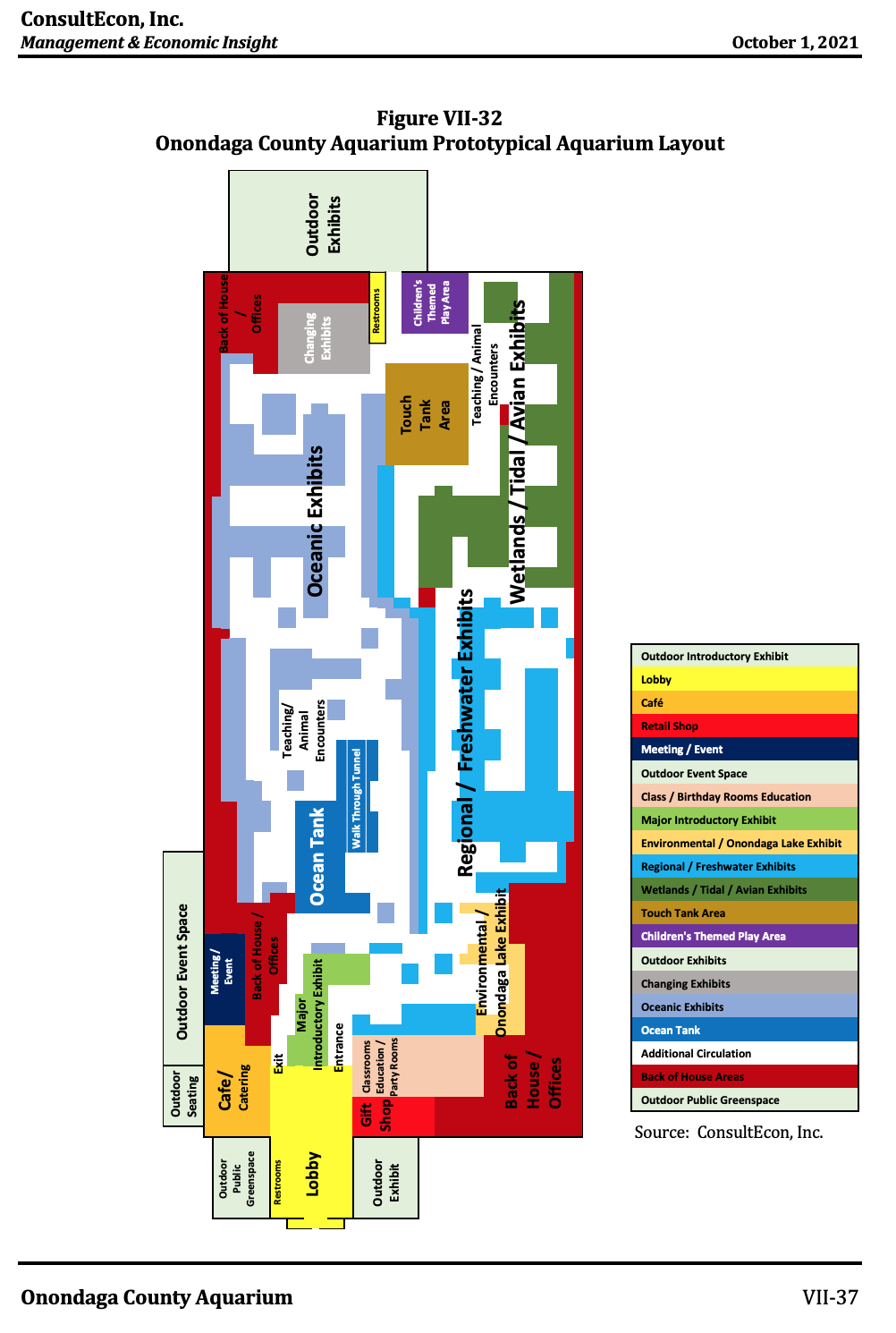In the fall of 2021 a surprise proposal for an $85 million aquarium at the Syracuse Inner Harbor was announced. The project would be paid for using a large budget surplus Onondaga County experienced as a result of federal pandemic funding and stronger than expected tax collections. This proposal also sparked a heated debate over what those funds should be used for and whether an aquarium is truly a viable project for this community. Should these funds instead go towards improving roads, starting new assistance funds, creating community programs, or simply stowed away for future uses? Should we bond for the required funding instead of paying for it in cash? If we are to build an aquarium, does it need to be so large?
Each of these questions are valid and should be considered, but I also think we should be looking at this project as part of a grander plan for the Inner Harbor. The Inner Harbor has been stuck in development Hell for decades (including the current legal troubles of the developer who purchased most of the land), which has resulted in an area ripe with opportunity sitting mostly vacant and overgrown. Perhaps it’s time to really consider what that future could be, with an aquarium as the spark.
Addressing Some Key Questions
First, we need to look at some of the key questions opponents and skeptics of the aquarium project bring up, since they are valid concerns. We’ll begin with the other possible uses for the funds.
Road construction is always a favorite issue to point to by critics, noting the many potholes and other issues we experience on a yearly basis in the northeast. But overall, the roads that Onondaga County is in charge of are kept in fairly good condition, as noted in SMTC’s annual pavement rating report. While this report only documents the federal aid eligible roadways, those same roads have the most impact on people’s day-to-day movements. Some of the funding could be pushed to the City of Syracuse to improve their roadways, but even then, the City has made some significant progress over the past decade of maximizing their paving budget. We must also remember that the City will also receive $123 million in federal funds as part of the pandemic relief fund, with some of that focused on improving roadways.
Others often point to providing additional services that are needed within our community, including social and health services. While I think we need further investment in those areas, it is not wise to start programs of that nature with a one-time surplus. Once those funds are gone, the services that may have become vital to some will be stripped away. We should instead look at our recurring costs and see where we can shift funding to better represent the needs of our communities. Additionally, we should be looking for ways to build our economy and create opportunities, which will help increase funding for future programs that will be more reliable than recovery funds.
But that still leaves questions on the specifics of the aquarium itself. Should we bond for it instead of paying for it with the surplus funds? And just how big should an aquarium be? The easier question to answer here is about the size. Did you know Niagara Falls has an aquarium? If you did, you’re probably one of the many visitors who was disappointed by how small the facility is. If you’re looking to build a regionally significant project, the size and scope of the project should fit that criteria. The proposed project would be the largest aquarium in the northeast, immediately bringing it attention throughout the larger region. While few people travel places just for an aquarium, the presence of a high quality aquarium might sway some to take a chance, or keep those already traveling to the area here longer. Think of fans of teams at SU or Canadian shoppers at the mall or visitors to the State Fair during the summer who might decide to extend their trip by a day to explore the aquarium. Those extra days can be a huge boon for businesses within Syracuse and leave people with a more positive view of the City as a whole, hopefully leading to return visits.
When it comes to bonding over using the surplus funds, the nice thing about using the surplus funds is that you already have them and you can act now with them. That can be subject to a larger debate on how best to fund a project of this scale, but sometimes its good to just rip off the bandaid.
The Inner Harbor’s Future
Now let’s look at some ways that the aquarium can play into the future of the Inner Harbor, and some ways we can improve upon this plan to give it a real chance at success.
First, it is an investment in the quality of life for the community. Aquariums provide an educational experience that is unique, which students at all age and grade levels can benefit from. One way we can push the current proposal to a new level is by creating a larger learning/ laboratory annex that is supported through partnerships with colleges throughout Central New York. Syracuse University, LeMoyne College, as well as the nearby SUNY campuses (Cortland, Oswego, and ESF) all have biology and environmental studies programs, which could benefit through more in-depth research opportunities at the aquarium. Providing these unique connections could encourage the expansion of these types of programs in the region as well as attract students who value this type of hands-on education. These partnerships will also provide financial support for the aquarium, which could ultimately support reduced price or free admission for City residents or low-income families. One of the main sticking points has been the proposed fee for admission, $21 per adult with reduced prices for many different groups. The financial support of colleges and universities could be geared towards creating a more equitable fee structure that ensures everyone access to this unique attraction.
Let’s also look at the accessibility of the proposed aquarium site. The Inner Harbor sits in a unique location in terms of access by residents across the City and the greater region. Yes, it sits between I-690 and I-81, providing easy access to visitors driving to the site from outside the City, but increasing access by bus, bike, and on foot are possible and already somewhat in place.
The BRT network that is considered the locally preferred option in the SMART 1 study would run nearby on North Salina Street. A slightly different route that runs up Solar Street, where the aquarium would be built, was considered but was not selected due to higher ridership demands on the Salina Street corridor. Even though the BRT system would not run directly to the aquarium site, improved pedestrian and bicycle facilities in the area would help create the needed connections. The I-81 Community Grid would help produce these new connections as wider sidewalks and new bike lanes that connect the Inner Harbor to North Salina Street are proposed across multiple bridges. This would not only help connect the Northside to the Inner Harbor, but also connect it to the Onondaga Creek Walk and Empire State Trail, making the location one of the easier places in the City to reach without a car.
For those who do choose to reach the aquarium and Inner Harbor by car, minimal parking should be built directly surrounding the site, and instead a partnership with Destiny USA should be forged to use the large swaths of overbuilt parking lots across Bear Street. We should be focused on creating a walkable neighborhood surrounding the Inner Harbor, filled with apartments, townhouses, shops, restaurants, and parkland. This can only be accomplished by reducing the amount of parking available directly on site and utilizing the already existing lots across the street.
And on that note, we should be looking to use the development of the aquarium as leverage to force COR to continue their proposed build out at the Inner Harbor or sell the land to others who will develop it. The original proposal would have created a mixed-use neighborhood that finally provided the City a chance to fully connect with the waterways of its history. With the introduction of townhouses at the Harbor, we should require that at least half of them are for sale to own, providing a new homeownership opportunity in a denser development style than most of the City offers. An additional thing to note is that even if the original plan was fully built out, the land needed for the aquarium would remain open according to the site plan above. This would allow the aquarium to become an anchor institution at the Inner Harbor and pull the development currently occurring in Franklin Square northward.
While the Inner Harbor development shouldn’t hinge on whether an aquarium is built or not, I still think there are some unique benefits that an aquarium brings to the City that should encourage us to make the investment. The last point I’ll make, and this one can sometimes be overlooked, is that we should invest in quality of life amenities that can be enjoyed by all. The Amphitheater, while an amazing amenity, is often geared towards adults over kids. Restaurants and bars in Downtown Syracuse emphasize alcohol consumption as part of the experience (with many local breweries producing top notch beers and drinks). Destiny USA is a closer example to an amenity that can be enjoyed by all, but only if you want to spend and consume. An aquarium, like the zoo and the museums Downtown, can provide an afternoon or even a full day of fun for all ages without the pressure to consume. You’re truly there for an experience, whether to learn or to be calmed by the presence of nature, and that is truly a benefit to the community.
Note: The Central New York Regional Planning Board was involved in the aquarium study. While I have worked on the CNY Broadband Study with the agency, I have had no involvement in this study and this blog post is entirely my personal feelings on the proposal.









